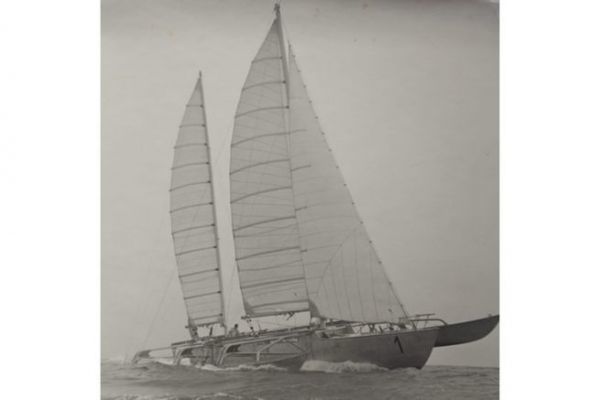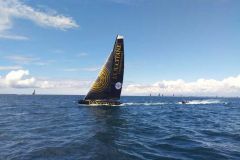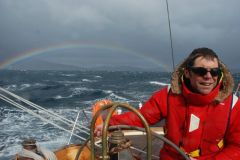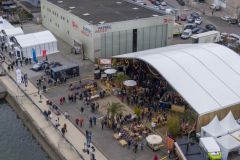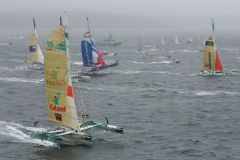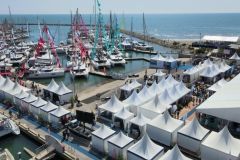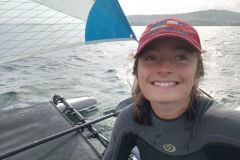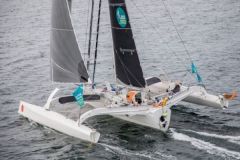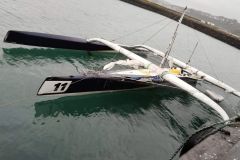Ambitions and technical challenges
The decision to rebuild Pen-Duick IV is not only a tribute to Éric Tabarly and his pioneering spirit, but also a considerable technical and historical undertaking. The Pors-Moro shipyard in Pont-L'Abbé, owned by Arnaud Pennarun, plans to begin this ambitious rebuild at the end of 2024. The aim is to rebuild not just a boat, but a piece of maritime history. The project aims to reproduce the trimaran according to the original 1968 plans, incorporating subsequent technical improvements made by Eric Tabarly (abandoning the wing masts) and then Alain Colas (reinforcing the structure and improving the forward stability of the three hulls), thus guaranteeing historical fidelity and modern performance.
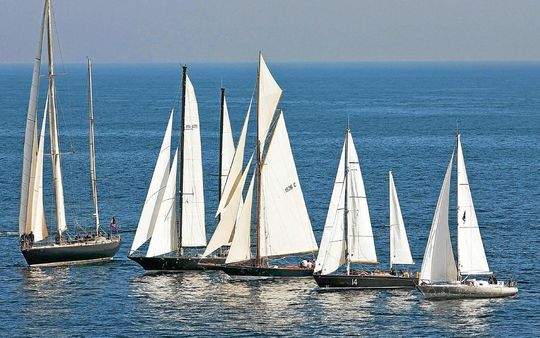
Nautical innovations and prospects
Pen-Duick IV was originally a masterpiece of engineering, designed by André Allègre and built in aluminum. Nicknamed the "giant octopus", the trimaran revolutionized ocean racing with its innovative dimensions and rigging. Rebuilding this iconic multihull involves not only recreating its original features, but also adapting materials and construction techniques to current standards without compromising its legendary performance. This project is not just a replication, it is a redefinition of what historic yachts can bring to future generations of sailors.
A legendary trimaran
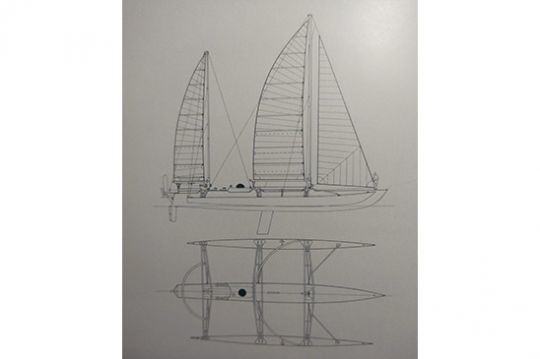
Designed to be the fastest trimaran in the world, it was the first of its kind to compete in the Transat, although it was forced to retire from its inaugural edition in 1968 at the hands of Eric Tabarly. After this abandonment, Pen-Duick IV immediately made a name for itself by shattering the Atlantic crossing record between the Canaries and the West Indies in December of the same year. This performance was followed by an impressive participation in the Los Angeles to Honolulu race in July 1969, where she finished out of competition (trimarans were not allowed), arriving two days ahead of the best American monohulls, confirming her extraordinary speed.
The boat was then entrusted to Alain Colas, another illustrious name in French sailing and a former Tabarly crew member. Under his guidance, Pen-Duick IV, renamed Manureva, continued to forge its legend. Colas won the Transat in 1972, breaking the event record and consolidating the trimaran's status as a dominant force in competitive sailing. By reinforcing the structure and stability of all three hulls, Alain Colas also prepared Manureva for the solo round-the-world race via the three capes, which she completed in 1973 (with one stopover).
However, Pen-Duick IV's saga as Manureva came to a tragic end when Alain Colas disappeared at sea on November 16, 1978, during the first edition of the Route du Rhum. This loss left a profound mark on the world of sailing, and added a mythical dimension to the trimaran's already rich history.
A project with a historic dimension
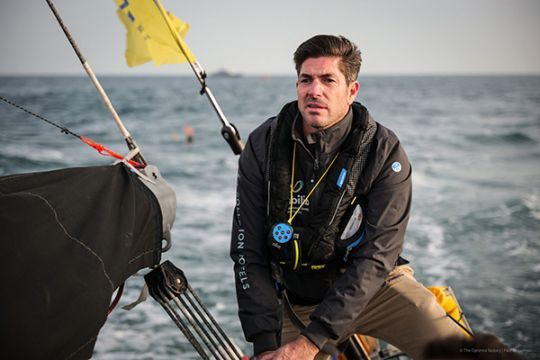
By bringing Pen-Duick IV back to life, Arnaud Pennarun and Chantier Naval de Pors-Moro are not only reviving a piece of nautical heritage, they are reinventing it for the future challenges of ocean racing. An idea carried forward by the breath of the past and the vision of the future.
Pen-Duick IV technical specifications
- Length: 20.80 m overall
- Width: 10.70 m
- Draft: 2.40 m/0.80 m
- Displacement: 6.5 tonnes
- Upwind sail area : 107 m2
- Material: aluminum
